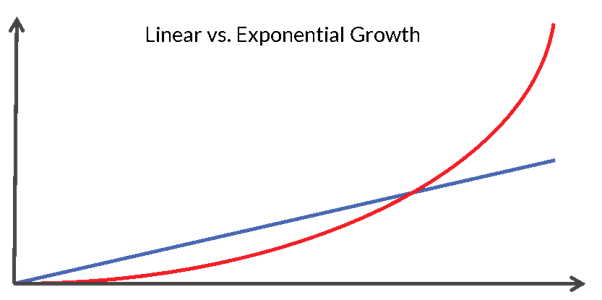Linear v Exponential – Part 2 – How to make a connected system pay for itself.

Following on from last week’s blog of linear v exponential we now look at Stakeholder Responsibilities and Return on Investment relating to exponential growth.
Stakeholder Responsibilities:
Within each organisation there are often several people who could be regarded as stakeholders.
- Dispatcher/Transport Manager – often looking at the day-to-day functions of vehicle locations, routing, efficiencies as well as some measure of compliance.
- Driver – has more specific responsibilities of being at a location for a specific time regardless of what sector they operate. Technology can play a part in a driver’s life through walkaround checks, navigation, job management, avoiding traffic and sometimes tachograph management.
- Managers/Directors – tend to have a “top down” view of compliance, health & safety, insurance and ultimately profitability.
Do you see the Stakeholders from your organisation within the chart below?
|
Dispatcher |
Driver |
Manager | Other stakeholders |
|
Routing planning & Scheduling system |
Navigation |
Working time reporting |
Billing & invoicing system |
|
Vehicle tracking |
Walk around check/ Defect reporting |
Tachograph Download |
Workshop maintenance |
|
Driver engagement |
Job & Traffic management |
Tachograph Analysis & Infringement reporting |
Insurance |
|
Planning/ Tachograph compliance & management |
Tachograph Management/ break reporting | Driver infringements debrief compliance |
Health & Safety |
|
Customer engagement & ETA reporting |
Tyre Management | Vehicle Maintenance & compliance |
Human Resources |
|
|
Fuel/ AdBlue Management | Fuel management |
Collision investigation |
|
|
Customer Service/ ETA reporting | Driver behaviour |
Driver Training |
|
|
Vehicle Security |
Productivity & Profitability |
|
|
|
Health & Safety |
Return on Investment (dependent on fleet size, fleet type) from potential exponential growth.
|
Area |
Value |
|
Fuel consumption decrease |
£15,000 |
|
Labour reduction due to automation |
£20,000 |
|
Extra job per vehicle per day (Assumption of £300 sales value per job with £150 margin) |
£75,000 |
|
Insurance |
£10,000 |
As you can see from the Return-on-Investment section this is how you make a connected system pay for itself. A few assumptions from the table above, as all fleets are different shapes and sizes to help explain might be:
Fuel consumption:
By improving driving behaviour this will have a significant impact on fuel consumption. This can be achieved through:
- Using technology to schedule better.
- Having visibility of ETA’s meaning less calls to drivers so lower stress levels for the drivers.
- A meaningful discussion around telematics reporting on fuel consumption and the impact each behaviour has on the MPG figures.
.jpg?width=300&name=download%20(1).jpg)
Labour reduction due to automation:
- An automated job scheduling solution can provide the following:
- Less labour required in the Traffic office (particularly useful through a driver shortage)
- Less mileage for the vehicles as the job are assigned to remote vehicles meaning the job doesn’t have to start from the company premises each morning.
- Better customer service as you have instant updates of jobs started, in progress and completed.

Extra Job per day:
Here are some examples of how that might be beneficial:
- Aggregates – research has shown that by delivering one extra load per day there is an additional sales value of circa £300 per day with a profit margin of £150 per day. If every vehicle could deliver this then your tech has a real return on investment.
- Service – in a similar fashion if you used scheduling, job despatch and possibly optimisation, you can enable your vehicles to achieve an additional job per day.
.jpg?width=300&name=download%20(2).jpg)
Insurance:
As you can see below the difference in insurance fleet costs can be quite significant. Use your technology to help you keep this cost as low as possible:
- A well-run fleet of vans would have an industry average insurance cost of £600 per annum whereas a poorly run fleet would be £850 per annum.
- A well-run fleet of HGV’s would have an industry average insurance cost of £2,000 per annum whereas a poorly run fleet would be £3,000 per annum.

These are just a few ways that you can stay ahead of the field by maximising a return on investment. Your competitors will be looking to automate so how can you keep up or stay ahead of the competition? Things that were previously only available to largest of fleets is now available to the smallest of fleets because of accelerating technology.


